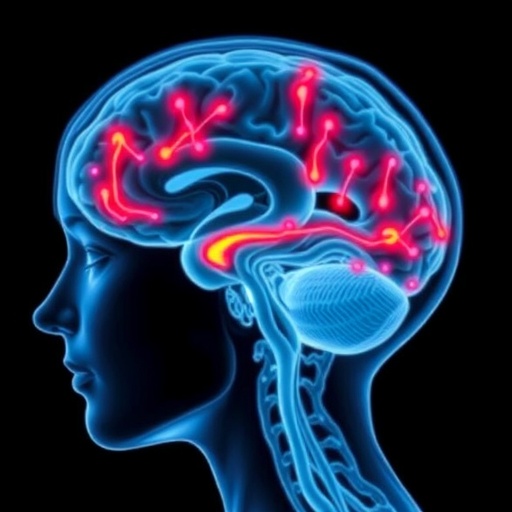In the realm of neuropsychiatric research, a groundbreaking study has unveiled profound disruptions in brain connectivity in women suffering from post-traumatic stress disorder (PTSD) following sexual assault. This work, conducted by a team of Spanish scientists and recently presented at the 38th ECNP Congress in Amsterdam, illuminates the neurological alterations that underlie the severe emotional dysregulation observed in a population that has historically been underrepresented in neuroscientific studies.
PTSD is a debilitating mental health condition triggered by exposure to traumatic events, characterized by pervasive symptoms such as intrusive memories, heightened anxiety, emotional numbing, and mood instability. While PTSD has been extensively studied in contexts such as warfare, natural disasters, and accidents, the neurobiological sequelae of sexual assault-induced PTSD have remained insufficiently explored despite sexual violence being one of the most prevalent forms of trauma experienced by women worldwide.
The researchers recruited forty women who had recently experienced sexual assault—within the past year—and subsequently developed PTSD. These participants were carefully matched with a control group devoid of PTSD, enabling comparative analyses. Utilizing resting-state functional magnetic resonance imaging (fMRI), the scientists probed the intrinsic communication patterns between critical brain regions implicated in emotional processing and regulation. Resting-state fMRI reveals how spatially distinct brain areas synchronize their activity in the absence of task-driven paradigms, offering insights into the baseline functional architecture of neural circuits.
Central to the investigation was the connectivity between the amygdala and the prefrontal cortex, two brain regions integral to the detection and regulation of emotional responses. The amygdala is instrumental in processing fear and threat-related stimuli, issuing signals that prepare the organism for rapid defensive responses. Conversely, the prefrontal cortex exerts top-down control over the amygdala, modulating its activity to prevent excessive or maladaptive fear reactions. Effective communication between these regions is paramount for emotional equilibrium and adaptive stress responses.
Remarkably, in over half of the women studied—22 out of 40—the synchrony between the amygdala and the prefrontal cortex was markedly diminished, approaching a near-complete decoupling. This severe fronto-limbic dysconnectivity may elucidate why women with sexual assault-related PTSD endure intense fear and mood volatility. When regulatory pathways falter, the amygdala’s hyperactivity may persist unchecked, culminating in heightened emotional reactivity and impaired fear extinction.
However, the study revealed an intriguing dissociation: the degree of brain connectivity disruption did not correlate linearly with the severity of PTSD and depressive symptoms reported by the participants. This suggests that while diminished fronto-limbic communication may serve as a biological hallmark of PTSD following sexual trauma, its presence alone does not predict the extent of clinical symptomatology. It implies the involvement of additional neurobiological, genetic, or psychosocial factors that mediate symptom expression and severity.
The authors emphasize that these findings bolster prevailing models positing PTSD as a disorder of disrupted neural circuits responsible for emotional regulation and fear processing. Understanding the nuanced ways in which trauma reshapes brain networks can pave the way for more targeted therapeutic interventions, potentially guided by neuroimaging biomarkers that identify individuals at heightened risk for chronic symptoms.
Future research will focus on the prognostic value of these connectivity patterns. If early disruptions in amygdala-prefrontal connectivity can predict response to standard or novel PTSD treatments, clinicians could personalize therapeutic strategies, intensifying care for those likely to endure more protracted recovery trajectories. Thus, neuroimaging metrics might transform from purely diagnostic tools into predictive instruments for optimizing individualized patient management.
Independent commentary from Dr. Marin Jukić of the Karolinska Institute and the University of Belgrade underscores the significance of this study. Dr. Jukić highlights that the profound reduction in functional coupling between key emotional regulation regions exemplifies severe circuit-level disturbances endemic to sexual assault-related trauma. Furthermore, the absence of correlation with symptom severity points to a potential role for these neurobiological changes as stable markers of PTSD rather than fluctuating state indicators.
Such biomarkers could revolutionize psychiatric care by informing the development of novel interventions specifically aimed at restoring functional connectivity in disrupted brain networks. Yet, Dr. Jukić cautions that longitudinal studies encompassing larger cohorts are essential to elucidate how these neural abnormalities evolve over time and whether targeted treatments can ameliorate dysconnectivity and improve clinical outcomes.
This pioneering research not only spotlights a critically underserved demographic but also reinforces the imperative of integrating advanced neuroimaging modalities into the study of trauma-related psychiatric disorders. As the field advances, unraveling the complex interplay between trauma, brain circuitry, and emotional dysfunction promises to usher in an era of precision medicine tailored to the neurobiological signatures of PTSD.
Furthermore, the study’s methodological robustness—recruiting recent assault survivors and utilizing robust resting-state fMRI protocols—allows for a timely and sensitive examination of early neural alterations post-trauma. This temporal proximity to the assault is vital for distinguishing primary neurobiological effects from potential downstream consequences of chronic symptomatology or treatment.
As PTSD continues to afflict millions worldwide, particularly women vulnerable to sexual violence, these scientific insights carry profound clinical and societal implications. Beyond their relevance to pathophysiology, they underscore the urgent need for trauma-informed approaches that integrate neuroscientific findings to enhance diagnosis, prognostication, and therapeutic innovation.
In sum, the discovery that amygdala-prefrontal cortex communication can plummet to near zero in women with sexual assault-induced PTSD offers a compelling neurobiological lens through which to view emotional dysregulation in trauma. This work heralds a new frontier in elucidating the brain’s response to complex trauma and fortifies the resolve to develop targeted, efficacious interventions for a population long underserved in neuroscience research.
Subject of Research: People
Article Title: Not provided
News Publication Date: Not provided
Web References:
- WHO PTSD Factsheet: https://applications.emro.who.int/docs/WHOEMMNH235E-eng.pdf
- Meta-analysis on sexual assault and PTSD: Dworkin ER, Jaffe AE, Bedard-Gilligan M, Fitzpatrick S. PTSD in the Year Following Sexual Assault: A Meta-Analysis of Prospective Studies. Trauma Violence Abuse. 2023 Apr;24(2):497-514.
Image Credits: Lydia Fortew




